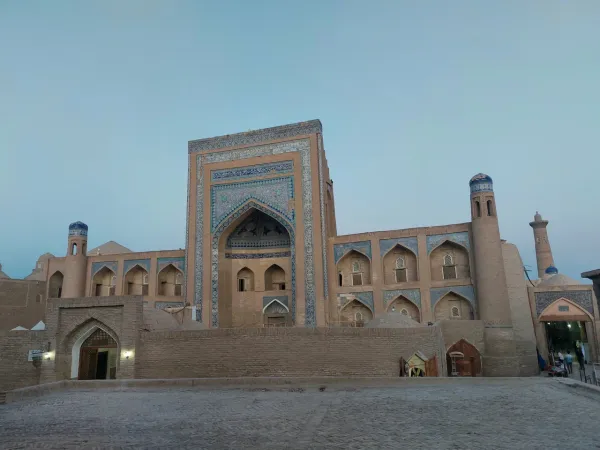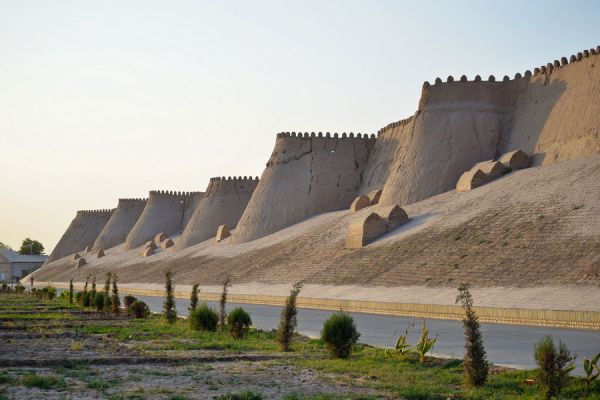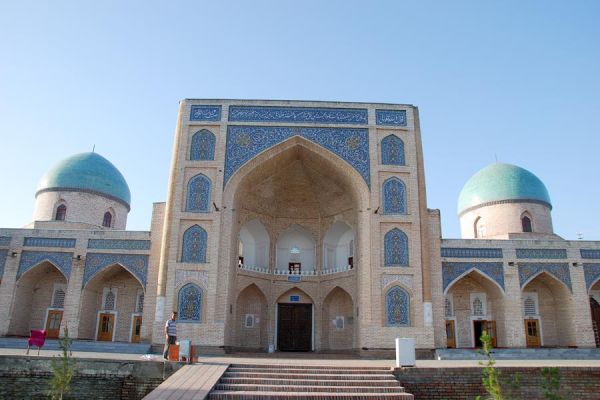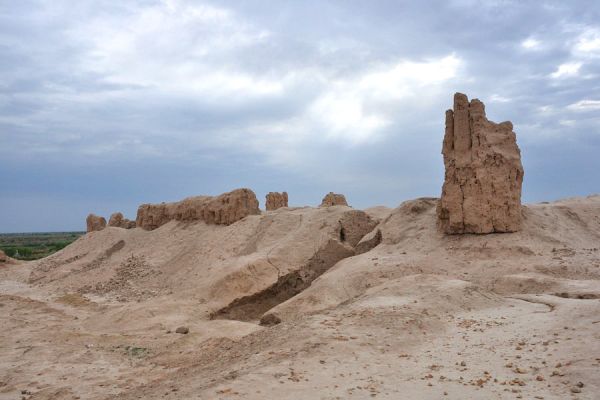Khojamberdy-biya Madrasah
Khiva is an ancient city with a rich history, the Great Silk Road passed through it, and merchants stopped here on their route. One of the riches of the city is the preserved buildings, which have not only historical, but also cultural value. One of the architectural monuments of Khiva is the Khojamberdy-biya madrasah, built in the second half of the 17th century. It is considered one of the oldest preserved madrasahs in the city. For comparison, a significant part of the sights of Khiva were built between the 18th and 19th centuries.
The building is located within Ichan-Kala, the historical center of the city, which contains the most interesting and valuable architectural and historical monuments, as well as preserved residential buildings. The eastern gate of the city and the much later built Allakuli Khan madrasah are located next to the madrasah, together with which it forms a single ensemble. The Khojamberdy-biya madrasah was rebuilt during the construction of the new madrasah, it essentially became a platform for its construction, due to which the modern appearance of the building differs significantly from the original one.
There are shopping malls adjacent to the madrasah, where you can buy colorful oriental souvenirs that will remind you of a trip to this ancient city. Opposite the building there is another madrasah, named after the ruler of Kutlug Murad Inak— the brother of Muhammad Rahim Khan I.
Madrasas are called Muslim educational institutions, and for a long time their creation has been considered a godly cause, so khans, statesmen, and well-to-do respectable people have allocated significant funds for their construction. Educational institutions played an important role in the training of religious ministers, educated politicians, scientists, poets, and simply educated representatives of society. Many madrasahs of Khiva have been preserved in good condition to this day, and some have opened museums and exhibitions that introduce the history of Khorezm, its culture and customs. On the basis of some of the buildings, a tourist infrastructure was created — hotels, restaurants.
Architecture
The construction of the Khojamberdy-biya madrasah was completed in 1688, and later it underwent major changes during the construction of the Allakuli Khan madrasah. Allakuli Khan, who ruled at that time, pursued a policy aimed at the cultural development of the Khanate of Khiva, and new madrassas and mosques were built under him. To fortify the city from enemy attacks, the ruler erected external defensive walls (Dishan Kala), modern tourists can see only a few remaining gates from the construction. The khan also ordered the construction of the Tash-Khauli Palace, a preserved example of 19th—century architecture.
Towards the middle of the 19th century, the ruler of the city, Allakuli Khan, began to build a spacious mosque and a madrasa adjacent to it. A part of the city wall located near the Khojamberdy-biya educational institution was eliminated, the facade of the newly built building was embedded in the courtyard of the ancient one. The reason was that the foundations of the structures had different horizontal elevation levels. As a result of the reconstruction, the courtyard of the old madrasah was divided in two, outwardly resembling a saddlebag thrown over the back of a camel, in Uzbek, "khurjum". Due to this similarity, the ancient madrasah was popularly known as the Khurjum madrasah.
The rectangular building has a small courtyard inside, shaded from the corners by awnings, arranged for the recreation of pupils and their mentors during the hot daytime hours. The wooden doors are decorated with elaborate carvings, traditional for the East.
Inside, the interiors are very austere. The wooden window grilles (called panjara in Uzbek) are painted alone, giving the room a unique oriental flavor. In a remote corner there is a darshona, a kind of academic auditorium under a dome, square in plan. The educational institution is extremely small, it has only 16 hujra cells for students to live in.

















